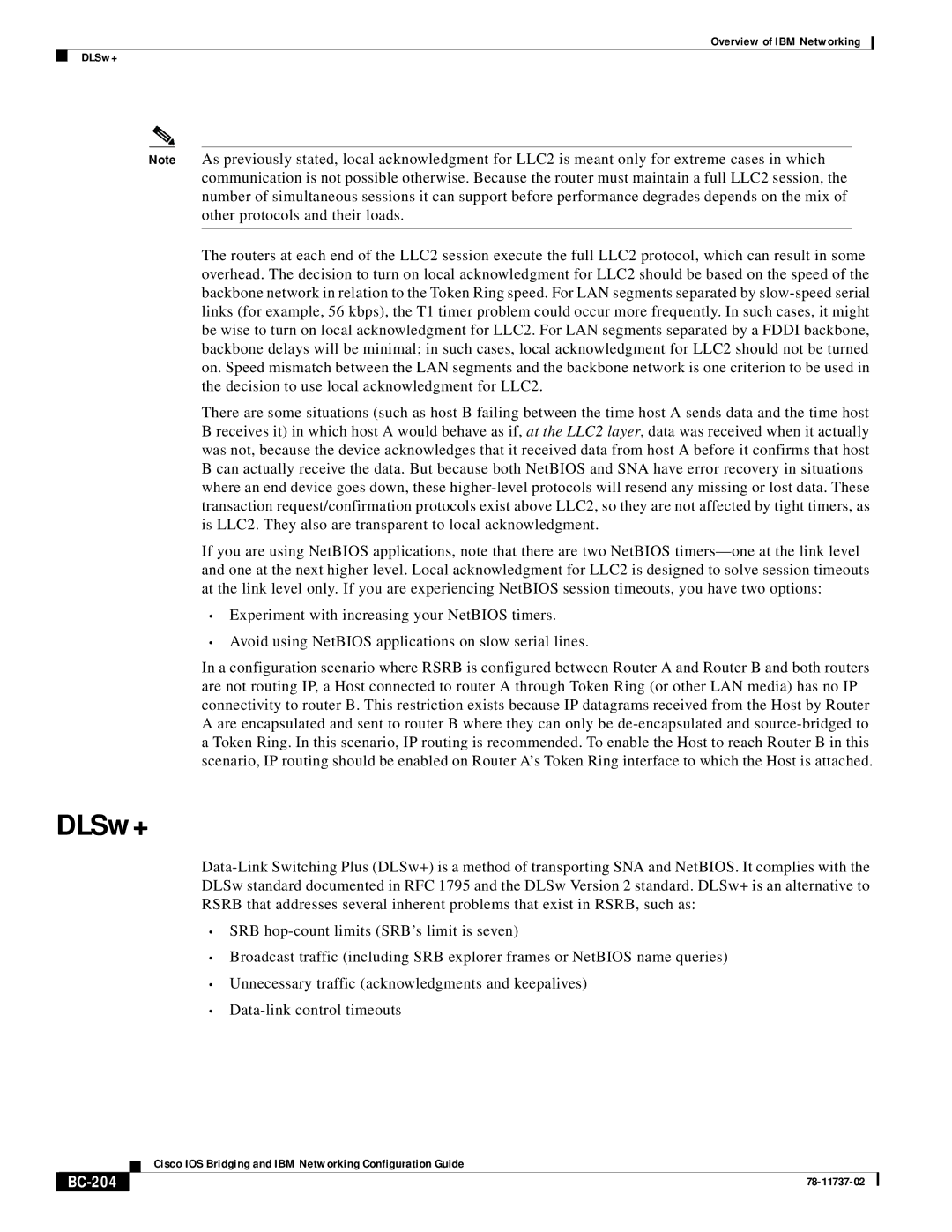
Overview of IBM Networking
DLSw+
Note As previously stated, local acknowledgment for LLC2 is meant only for extreme cases in which communication is not possible otherwise. Because the router must maintain a full LLC2 session, the number of simultaneous sessions it can support before performance degrades depends on the mix of other protocols and their loads.
The routers at each end of the LLC2 session execute the full LLC2 protocol, which can result in some overhead. The decision to turn on local acknowledgment for LLC2 should be based on the speed of the backbone network in relation to the Token Ring speed. For LAN segments separated by
There are some situations (such as host B failing between the time host A sends data and the time host B receives it) in which host A would behave as if, at the LLC2 layer, data was received when it actually was not, because the device acknowledges that it received data from host A before it confirms that host B can actually receive the data. But because both NetBIOS and SNA have error recovery in situations where an end device goes down, these
If you are using NetBIOS applications, note that there are two NetBIOS
•Experiment with increasing your NetBIOS timers.
•Avoid using NetBIOS applications on slow serial lines.
In a configuration scenario where RSRB is configured between Router A and Router B and both routers are not routing IP, a Host connected to router A through Token Ring (or other LAN media) has no IP connectivity to router B. This restriction exists because IP datagrams received from the Host by Router A are encapsulated and sent to router B where they can only be
DLSw+
•SRB
•Broadcast traffic (including SRB explorer frames or NetBIOS name queries)
•Unnecessary traffic (acknowledgments and keepalives)
•
| Cisco IOS Bridging and IBM Networking Configuration Guide |
|
